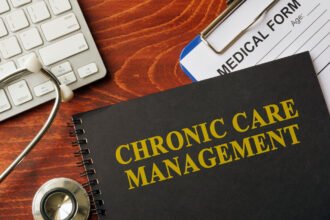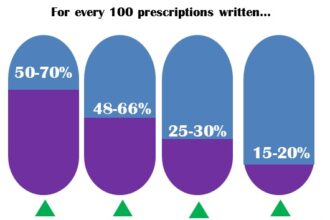After Hurricane Katrina hit New Orleans, several hundred thousand refugees descended on Dallas, Houston and other Texas cities. Many of them needed medical care. Unfortunately, Texas wasn’t prepared.
After Hurricane Katrina hit New Orleans, several hundred thousand refugees descended on Dallas, Houston and other Texas cities. Many of them needed medical care. Unfortunately, Texas wasn’t prepared.
If a natural disaster hit Oregon, the victims would have fared much better. The state’s 8,500 nurse practitioners (NPs) are free to come to the aid of people in need of care, with no legal obstruction. In Oregon, nurses with the proper credentials and licensure may open their practices anywhere they choose and operate in the same capacity as a primary care physician without oversight from any other medical professionals. They can draw blood, prescribe medications, and even admit patients to the hospital.
In Texas, which has some of the most stringent regulations in the country, however, a nurse practitioner can’t do much of anything without being supervised by a doctor who must:
- Not oversee more than four nurses at one time.
- Not oversee nurses located outside of a 75 mile radius.
- Conduct a random review of 10 percent of the nurses’ patient charts every 10 days.
- Be on the premises 20 percent of the time.
Why Not Me?
Note that under the rubric of “nurse,” there are a host of subcategories. In general, nurse practitioners have the skills to prescribe, treat and do most things a primary care physician can do. They generally must have completed a Registered Nurse and a Nurse Practitioner Program and have a Masters or PhD degree. In addition, there are physician assistants, registered nurses, licensed vocational nurses, emergency medical technicians, paramedics and army medics. In most states, each of these categories has its own set of restrictions and regulations, delineating what the practitioners can and can’t do.
If all this sounds like the reinvention of the Medieval Guild system, that’s exactly what it is. In Capitalism and Freedom, Milton Friedman argued that these labor market restrictions are no more justified today than they were several centuries ago. The proper role of government, said Friedman, is to certify the skills of various practitioners; then let consumers decide what services to buy from them.
Take JoEllen Wynne. When she lived in Oregon, she had her own practice. As a nurse practitioner, she could draw blood, prescribe medication (including narcotics) and even admit patients to the hospital. She operated like a primary care physician and without any supervision from a doctor. But, JoEllen moved to Texas to be closer to family in 2006. She says, “I would have loved to open a practice here, but due to the restrictions, it is difficult to even volunteer.” She now works as an advocate at the American Academy of Nurse Practitioners.
Texas’ misguided attempt to protect its citizens from people like JoEllen Wynne makes it virtually impossible for nurses to practice outside of a primary care office. Take the requirement that a doctor be present and spend at least 20 percent of her time supervising her nurses. If they are employees of her office, she automatically meets the requirement simply by being on site. Otherwise, she must travel and spend 20 percent of her time out of the office.
Walk-in clinics manned by nurses in pharmacies and shopping malls seem to have overcome these legal barriers. But in poorer areas — especially in poor, rural areas — the obstacles may be insurmountable. In 2009, approximately 30 percent of Texas counties had poverty rates of 20 percent or more. Most of these are rural counties. Yet the farther a nurse is located from a doctor’s office, the less likely the doctor will be to make the drive to supervise the practice. In medically underserved areas, a doctor must visit a nurse practitioner at least once every 10th business day. This means that people living in poverty-stricken counties in Texas must drive long distances in order to get simple prescriptions and uncomplicated diagnoses.
The requirement that a nurse practitioner’s practice must be located within 75 miles of a supervising physician creates another complication: if a doctor supervises independent nurses, she must travel to their locations to supervise them. A physician with four nurses located in rural areas could end up driving hundreds of miles a week, taking valuable time out of her practice to spend reviewing the patient charts.
Another example of the harmful effects of medical practice statutes is provided by the State of California:
After more than 6,600 people overwhelmed volunteers at a free mobile health clinic in Los Angeles last year, California legislators passed a law making it easier for out-of-state medical personnel to assist with future events.
But just over a week before the massive clinic returns, the state has failed to adopt regulations needed for the additional volunteers to participate. As a result, only medical personnel licensed in California will be able to treat patients and some people could be turned away.
Think about that. Doctors from Nevada, Arizona and Oregon can’t even cross state lines and deliver free care to people who need it!
The inability of paramedical personnel to deliver care they are capable of delivering will exacerbate the expected primary care shortages in the coming years. There are 778,000 practicing doctors in the United States. Just under half of them are primary care physicians. Even before health reform, the Association of American Medical Colleges estimated a growing shortage of nearly 131,000 physicians by 2025. The United States will need an additional 65,000 primary care physicians just to keep up with demand.
In a world of rapidly rising health care costs and inadequate access to care, state legislatures should be widening the market for highly-trained primary care providers, not restricting it.
(This Alert was written with Virginia Traweek.)







